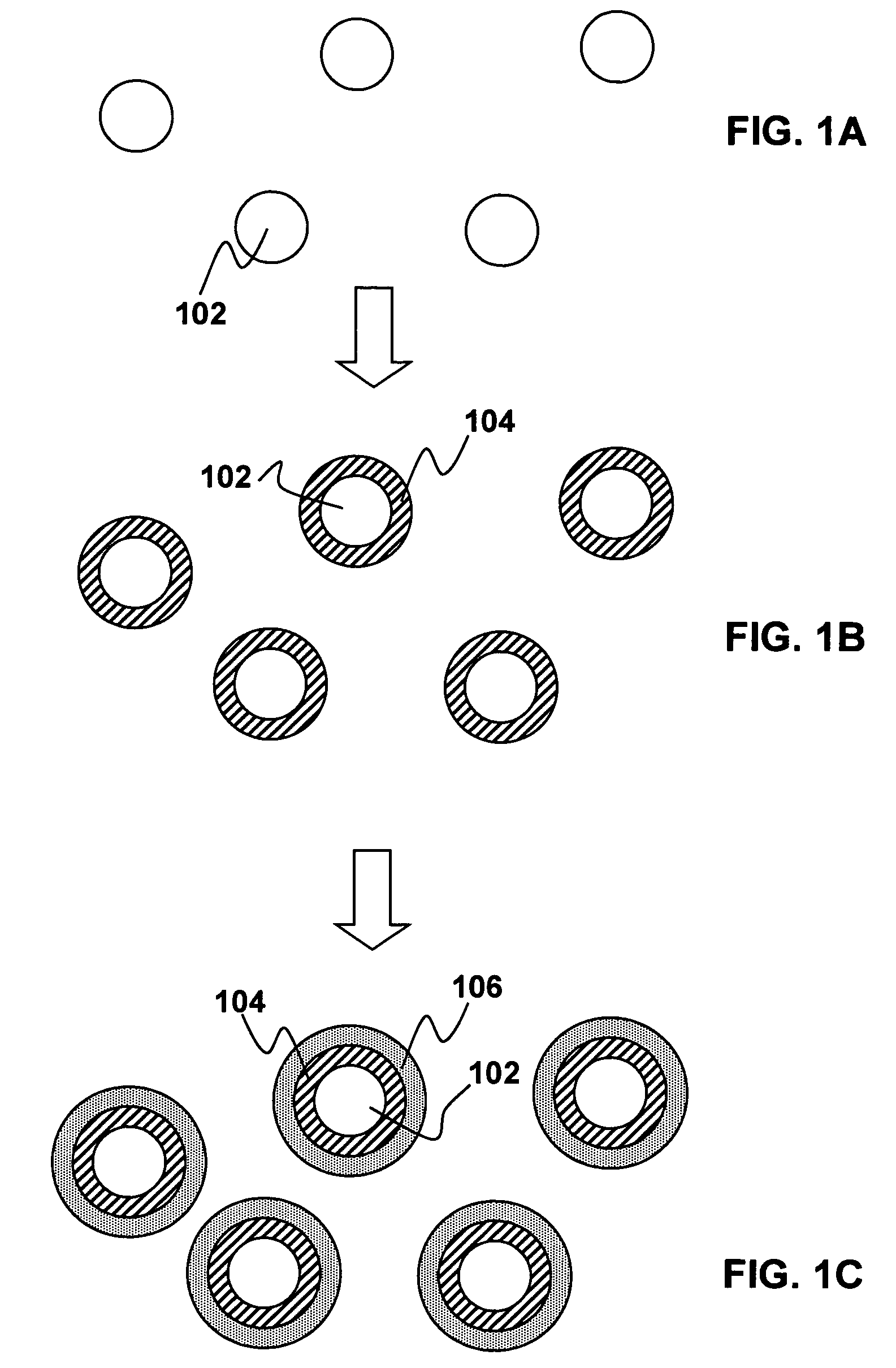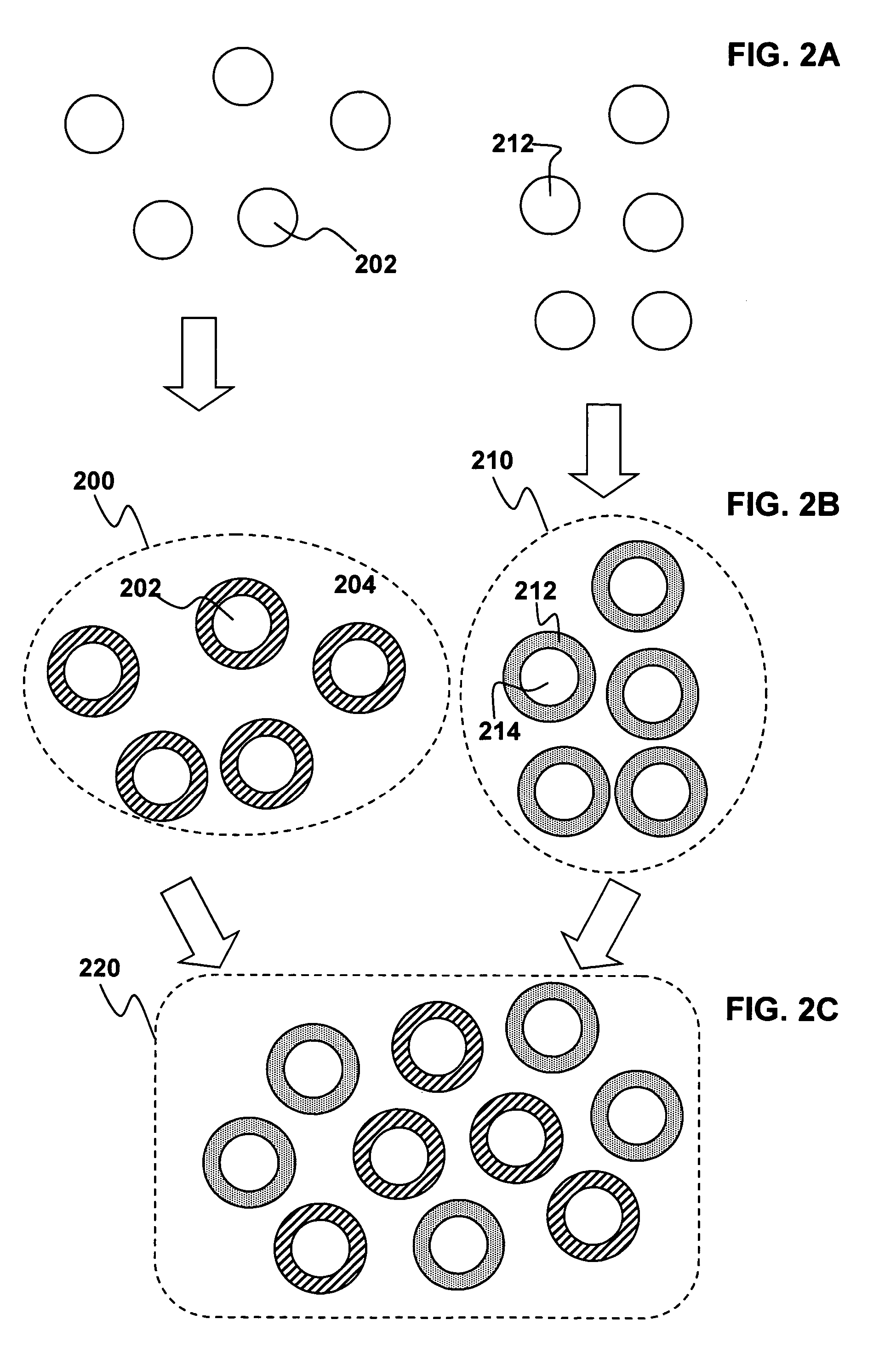Coated nanoparticles and quantum dots for solution-based fabrication of photovoltaic cells
a photovoltaic cell and nanoparticle technology, applied in the field of photovoltaic cells, can solve the problems of gallium oxide, potential explosive step, and use of metal oxides as precursor materials for cigs
- Summary
- Abstract
- Description
- Claims
- Application Information
AI Technical Summary
Benefits of technology
Problems solved by technology
Method used
Image
Examples
Embodiment Construction
[0015]Although the following detailed description contains many specific details for the purposes of illustration, anyone of ordinary skill in the art will appreciate that many variations and alterations to the following details are within the scope of the invention. Accordingly, the exemplary embodiments of the invention described below are set forth without any loss of generality to, and without imposing limitations upon, the claimed invention.
[0016]The disadvantages associated with the prior art may be overcome by fabricating CIGS absorber layers using coated nanoparticles. Nanoparticles are discrete entities sized less than about 1000 nm, more preferably less than about 500 nm, and still more preferably less than about 250 nm. When the nanoparticles are sized less than about 10 nm, their chemical, physical, electronic, and optical properties often change relative to that of bulk material, and at about the 10 nm or less size scale, nanoparticles are also called “quantum dots”.
[00...
PUM
| Property | Measurement | Unit |
|---|---|---|
| diameter | aaaaa | aaaaa |
| diameter | aaaaa | aaaaa |
| diameter | aaaaa | aaaaa |
Abstract
Description
Claims
Application Information
 Login to View More
Login to View More - R&D
- Intellectual Property
- Life Sciences
- Materials
- Tech Scout
- Unparalleled Data Quality
- Higher Quality Content
- 60% Fewer Hallucinations
Browse by: Latest US Patents, China's latest patents, Technical Efficacy Thesaurus, Application Domain, Technology Topic, Popular Technical Reports.
© 2025 PatSnap. All rights reserved.Legal|Privacy policy|Modern Slavery Act Transparency Statement|Sitemap|About US| Contact US: help@patsnap.com



